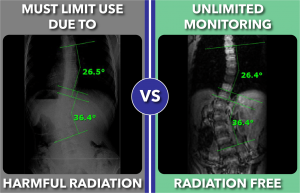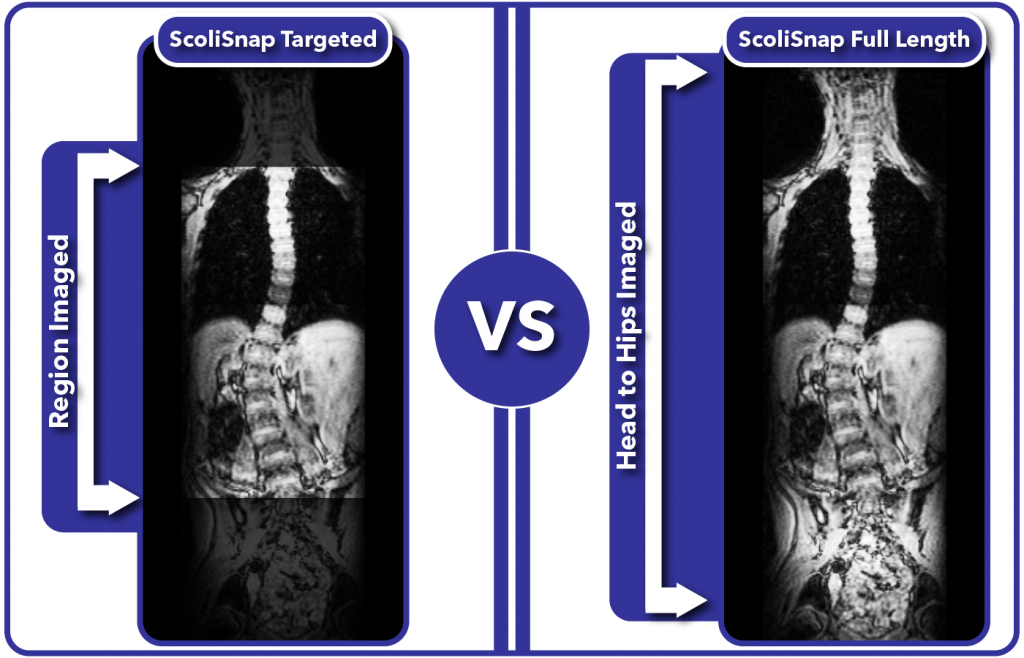Scoliosis Monitoring
ScoliSnapTM Standing MRI
Replace Harmful Scoliosis X-rays With Standing MRI Monitoring
Studies have shown cancer can occur 5× as often in scoliosis patients1 due to repeated x-ray exposure. This risk is completely eliminated with our 3-minute standing ScoliSnapTM MRI Monitoring. In fact, in most cases ScoliSnapTM can replace the scoliosis x-rays ordered by your doctor!
The ScoliSnapTM standing MRI provides more detailed curve measurements than conventional x-ray, while remaining 100% radiation-free. Now every patient — child or adult — can monitor their curve without worry of radiation or cancer.
Benefits of ScoliSnapTM Monitoring
- FAST: Requiring only three (3) minutes to complete, ScoliSnapTM standing MRI is fast and easy.
- RADIATION-FREE: ScoliSnapTM MRI monitoring is 100% radiation-free unlike x-ray.
- CAN BE USED FREQUENTLY: ScoliSnapTM MRI monitoring can be used as often as needed to closely monitor the spine unlike x-ray which needs to be limited to once or twice a year.
- STANDING: Unlike normal MRI machines where you lie down, ScoliSnapTM monitoring uses standing MRI so a curve can be accurately measured under gravity.
- TRACKED PROGRESS: The size of a scoliosis curve is tracked at each monitoring visit and is easily viewed in a custom graph showing your progress.
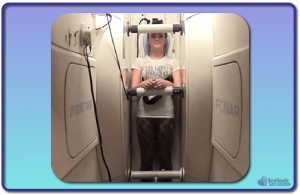
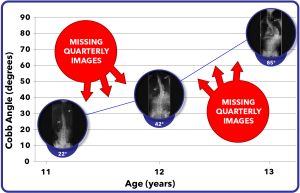
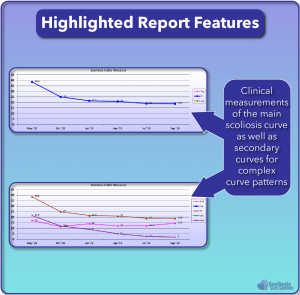
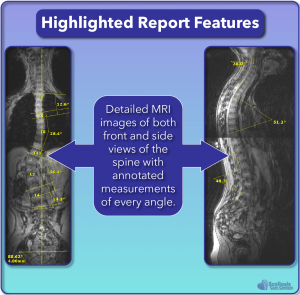
What’s the Difference Between Targeted and Full Length?
What’s Imaged
As you can see in the picture above, the ScoliSnapTM Targeted Monitoring images the region of the spine where the curve is located. In contrast, the ScoliSnapTM Full Length monitoring images the entire spine from head to hips. Large curves or tall patients may require the Full Length Monitoring in order to see the entire scoliosis.
Additional Requirements
Because ScoliSnapTM Targeted Monitoring only looks at a region of the spine, we need to know where the scoliosis curve is located to ensure it is imaged. Thus, at least one previous full length image of the spine (x-ray or MRI) must be taken in order to know where the curve is for a targeted scan.
Preparing for Your MRI Monitoring Appointment
Make your visit smooth by following these steps before you arrive:
- No metal in clothing: Remove bras or garments with wire.
- Remove jewelry: All metal can interfere with MRI magnets.
- Use the restroom: You’ll stand in the scanner for ~3 minutes.
- Stand still: Minimize movement to avoid blurry images.
- Expect noises: The MRI makes clicks, whirs & rumbles—totally normal.
References
- Simony, Ane et al. (2016): Incidence of cancer in AIS patients treated 25 years previously. European Spine Journal 25(10):3366–3370. DOI:10.1007/s00586-016-4747-2.
- Schmitz, A. et al. (2001): A new MRI technique for imaging scoliosis. European Spine Journal 10(2):114–117. DOI:10.1007/s005860100250.
- Wessberg, Per et al. (2006): Comparison of Cobb angles on standing x-ray vs. supine MRI. Spine 31(26):3039–3044. DOI:10.1097/01.BRS.0000249513.91050.80.
- Auerbach, J.D. et al. (2009): Feasibility of radiation-free monitoring in AIS. Spine Journal Meeting Abstracts 10.

